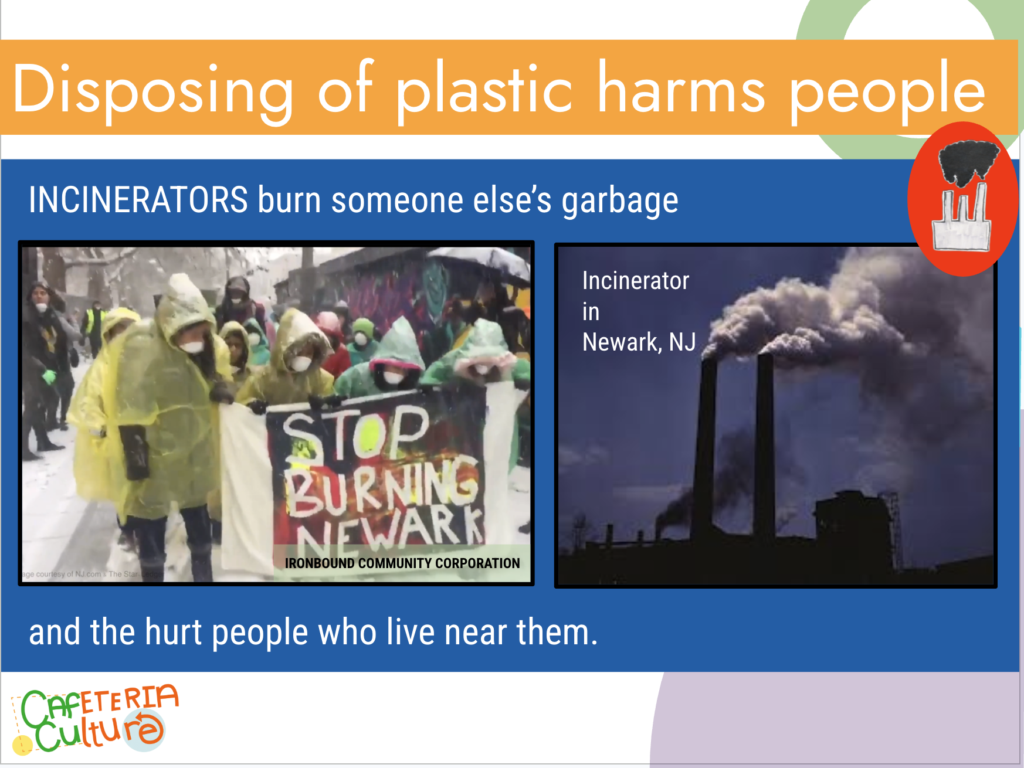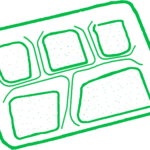


380 million metrics tons of plastic are produced each year. 91% of plastic is NOT recycled. We need to turn off the plastic tap and make less plastic!
They are in our water, our air, our soil, our food and our bodies.
We are literally eating, drinking and breathing in plastic.
Scientists recently found microplastics embedded deep in human lungs, in human blood, human placenta, and even in human brain.
Plastic threatens human life posing risks at every stage of its life cycle, including production, use, and disposal.


Each year, we produce over 350 million metric tons of plastic; more than 40% of this is single-use plastic–plastic packaging and foodware that is used for less than 20 minutes. Because plastic is not recyclable, most discarded plastic is sent to landfills or “leaks” into the natural environment.
Plastic does not biodegrade. Instead it breaks or fragments into small particles called microplastics and then into smaller particles called nanoplastics. Because plastic is made from fossil fuels and thousands of persistent toxic chemicals, they transfer thousands of migrating chemicals into our food during use. After disposal and fragmentation, plastic particles carry and distribute these toxic chemicals to every inch of the globe.
Scientists have found micro and nanoplastics in our digestive tract, deep in our lung tissue, in the placenta, and circulating in our blood. Nanoplastics deliver thousands of toxic chemicals directly to the organs, tissues, and cells in our bodies. We now face the public health crisis of our time.
School cafeterias serve over 40 million meals a day and make a large contribution to the plastic waste stream. School cafeterias are a great place to begin reducing single-use plastics, while also protecting the health of our students–society’s most vulnerable members. Plastic Free Lunch Day is a first step that results in useful photos and data but, most importantly, it shows everyone that food-dispensing and eating does not require plastic!
Plastic contains more than 10,000 chemicals and over 2400 are considered “substances of concern.”
WASHINGTON (Mar 25, 2025) –
New Evidence Links Microplastics with Chronic Disease
Places with higher concentrations of microplastics see higher rates of hypertension, diabetes, stroke and other noncommunicable diseases. “This study provides initial evidence that microplastics exposure has an impact on cardiovascular health, especially chronic, noncommunicable conditions like high blood pressure, diabetes and stroke,” said Sai Rahul Ponnana, MA, a research data scientist at Case Western Reserve School of Medicine in Ohio and the study’s lead author. “When we included 154 different socioeconomic and environmental features in our analysis, we didn’t expect microplastics to rank in the top 10 for predicting chronic noncommunicable disease prevalence.” American College of Cardiology
How plastic is making us fat & sick
Plastic threatens human health in two ways:
Toxic Food Contact Material. Plastic packaging and foodware (bottles, plates, cups, utensils) are so common, we assume they are safe. But thousands of (mostly unknown and untested) toxic chemicals that make up plastic migrate (move) from plastics into our food and drink.


There are so many chemicals that scientists now group them into “Intentionally Added Substances” (IAS) and “Non Intentionally Added Substances” (NIAS). This Water Bottle Study found several hundred different chemical substances in tap water stored in reusable plastic bottles and 90 likely NIAS in the water.

